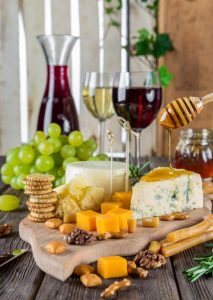Wines and Food: A Practical Guide to Perfect Pairings
When we speak of pairing, we refer to the pleasant combination of dishes and wines. The objective is clear: to highlight and highlight the organoleptic qualities of both products, in a harmonious, assembled way. Your gear should not “cover” or overshadow its characteristics, but give the best of itself, by way of understanding.
 Marriage is the root of the term that favors the enogastronomic partnership. The good news is that there are eternal couples who will never divorce because they fit together perfectly. In search of this union, combination, or ideal companion, we propose a practical pairing guide to print and always carry your pocket as a memory aid.
Marriage is the root of the term that favors the enogastronomic partnership. The good news is that there are eternal couples who will never divorce because they fit together perfectly. In search of this union, combination, or ideal companion, we propose a practical pairing guide to print and always carry your pocket as a memory aid.
Pairing by agreement
It occurs when the wine and the dish resemble or have the same characteristics. It is called understanding by similarity. The classic examples, from manual, are roast strip and Malbec; pink salmon and Pinot Noir; seafood salad and chardonnay without wood; pork tenderloin and Merlot. We also include the lentil stew and Bonarda (with aging in barrels), and the pasta stuffed with red sauce and Cabernet Franc.
Pairing by contrast
In this case, the characteristics of the wine and the food are the opposite. Here, they complement each other by differentiation. The emblematic cases are blue cheese and sweet wine; the empanadas from Salta and Torrontés; Asian food and Torrontés; spicy elaborations and light white wines.
Wines and red meat
Fatty meats: They go wonderfully with red wines of intense varieties, aged in barrels. Malbec, Cabernet Sauvignon, Cabernet Franc, Bonarda, Petit Verdot, and Tannat.
Lean meats: They preferreds with slight aging in barrels and varieties with medium or low tannins. Pinot Noir, Merlot, Tempranillo (Argentina), and Sangiovese.
Wines and fish
Fatty fish: They are very well understood with whites with a long barrel aging ( Chardonnay, Viognier, Semillon) or light reds (Pinot Noir, Merlot).
Lean fish: They combine very well with light, fresh, fruity white wines (Sauvignon Blanc, Torrontés, Tocai Friulano).
Wines and white meat
Chicken and pork: They achieve an excellent tandem with light red wines or slight aging in barrels (Pinot Noir, again, a wild card). Young Malbecs or modern Cabernet Sauvignon can go very well. They also combine with Merlot (without wood) or a young Cabernet Franc. Among the white ones, the ideal varieties are Chardonnay (small passage through wood), Viognier, or Semillon.
Rose wines
What about rosé wine? It stands out for its versatility. Despite being looked down upon by local palates, demand is starting to grow, for wines made in the Provence style (very delicate, almost invisible coloring).
Rosé labels are nice options to harmonize:
- Chopped;
- Chicken and pork meat;
- Certain red meats (entraña, buttock cover, rump tail, loin);
- Shrimp salads, seafood, seafood;
- Lean and fatty fish.
Wine and sweet
Ideally, sweet should go with sweet. Cakes, desserts, fruits, and elaborations with a certain sweetness combine perfectly with sparkling demi-sec or sweets and late harvest wines or natural sweets.
Imagine, dear reader, what a roast strip would look like with a sweet wine. I would not glue or glue!
Wines and salinity
In general, all foods with a high salt component are complex to pair with. In this case, we need wines with mineral notes. Pinot and Sauvignon Blanc are a very good option to complement these elaborations.
…
